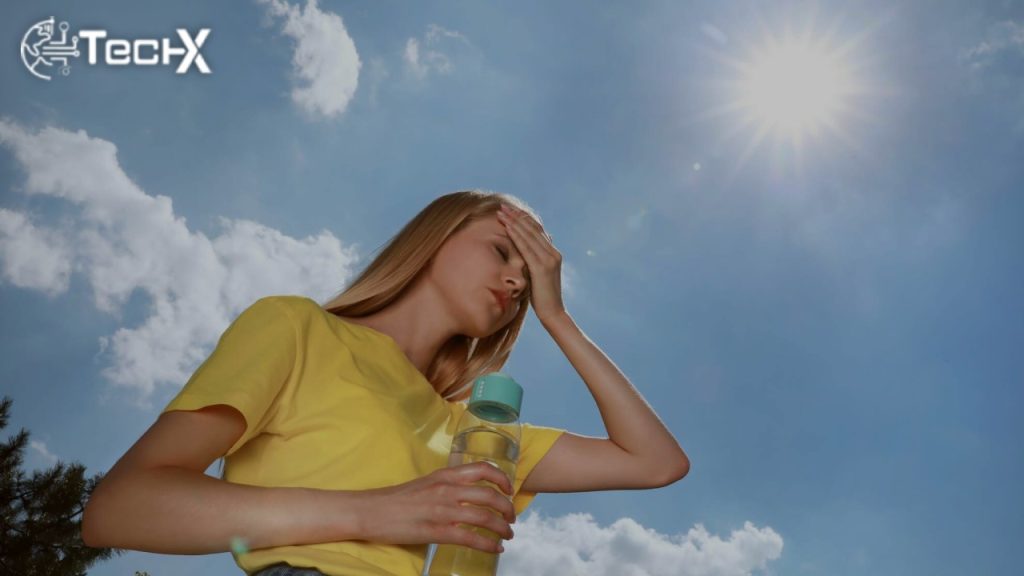Heatstroke, also known as ضربة الشمس (sunstroke), is a life-threatening condition caused by the body overheating, typically due to prolonged exposure to high temperatures or physical exertion in hot weather. It occurs when the body’s temperature regulation system fails, leading to a core temperature of 104°F (40°C) or higher. Without prompt treatment, heatstroke can damage the brain, heart, kidneys, and muscles, and may even be fatal.
Who is at Risk of Heatstroke?
Certain individuals are more vulnerable to heatstroke due to physiological or environmental factors:
1. Seniors (كبار السن)
- Older adults have a reduced ability to sweat, making it harder for their bodies to cool down.
- Chronic illnesses (like heart disease or diabetes) and certain medications increase susceptibility.
2. Children (الأطفال)
- Children’s bodies heat up faster than adult’s, and they may not recognize early heat stress symptoms.
- Leaving kids in parked cars, even briefly, can lead to fatal heatstroke within minutes.
3. Athletes and Outdoor Workers (الرياضيون والعمال)
- Intense physical activity in hot weather raises body temperature rapidly.
- Construction workers, farmers, and soldiers are at high risk due to prolonged sun exposure.
4. People with Chronic Illnesses
- Those with obesity, hypertension, or respiratory diseases struggle more with heat regulation.
- Dehydration and poor circulation worsen heat-related stress.
Also Read: Dr. Abdul Qadeer Khan: The Architect of Pakistan’s Nuclear Program
Signs and Symptoms of Heatstroke
Recognizing heatstroke early is crucial for survival. Symptoms can escalate quickly and include:
1. High Body Temperature (104°F/40°C or Above)
- The most critical sign—measured with a thermometer.
- Skin feels hot and dry (in classic heatstroke) or clammy (in exertional heatstroke).
2. Altered Mental State
- Confusion, agitation, slurred speech, or delirium.
- Severe cases may lead to seizures or coma.
3. Nausea and Vomiting (القيء والغثيان)
-
The digestive system shuts down due to extreme heat stress.
4. Rapid Heartbeat and Breathing
-
The heart works harder to cool the body, leading to a fast, weak pulse.
5. Lack of Sweating (عدم التعرق)
- In classic heatstroke, sweating stops despite extreme heat.
- In exertional heatstroke (from physical activity), the skin may still be sweaty.
6. Headache and Dizziness (دوار)
-
Throbbing headache due to dehydration and overheating.
Preventive Measures to Avoid Heatstroke
Prevention is the best defense against heatstroke. Follow these guidelines:
1. Stay Hydrated
- Drink water every 15–20 minutes, even if not thirsty.
- Avoid alcohol and caffeine, which increase dehydration.
2. Avoid Peak Sun Hours (10 AM – 4 PM)
- Stay indoors or in shaded areas during the hottest part of the day.
- If working outside, take frequent breaks in cool areas.
3. Wear Appropriate Clothing
- Light-colored, loose-fitting clothes reflect sunlight.
- A wide-brimmed hat and sunglasses provide extra protection.
4. Use Cooling Methods
- Take cool showers or use wet towels to lower your body temperature.
- Use fans or air conditioning to maintain a cool environment.
5. Never Leave Anyone in a Parked Car
-
Car temperatures can rise 20°F (11°C) in just 10 minutes, leading to fatal heatstroke.
Emergency Treatment for Heatstroke
Heatstroke is a medical emergency. If you suspect someone has it:
1. Call Emergency Services Immediately
-
Delayed treatment can cause organ failure or death.
2. Move to a Cooler Area
-
Get the person into shade or an air-conditioned space.
3. Cool the Body Rapidly
- Immerse in cold water (if possible) or apply ice packs to neck, armpits, and groin.
- Use a wet cloth or spray with cool water and fan the skin.
4. Hydrate (If Conscious)
-
Provide water or electrolyte drinks (avoid sugary or alcoholic beverages).
5. Monitor Breathing
-
If the person faints or stops breathing, perform CPR until help arrives.
Conclusion
Heatstroke is a preventable yet deadly condition that requires immediate action. By understanding who is at risk, recognizing symptoms early, and taking preventive steps, we can reduce heat-related illnesses. Always stay hydrated, avoid extreme heat exposure, and act quickly if heatstroke occurs.
Stay cool, stay safe, and protect those most vulnerable during hot weather!
